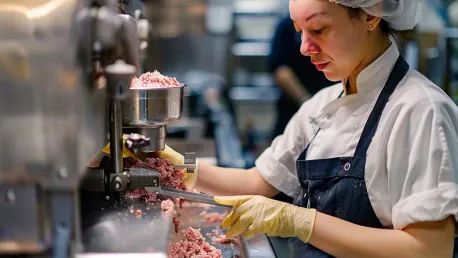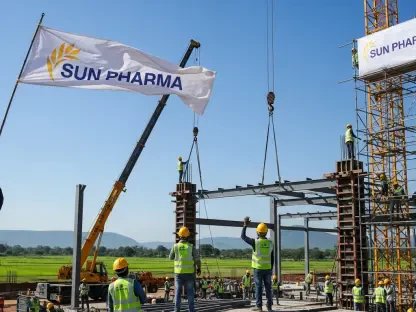Managing food recall responses is a critical aspect of the food manufacturing industry. With the increasing frequency of nationwide recalls, outbreaks like bird flu, and subsequent shortages, it is imperative for food manufacturers to have a robust risk management strategy. Alan Ingrassio, an expert in risk management and insurance at Aon, provides valuable insights into the strategies and approaches necessary for handling food recall responses effectively. The process of food recall must be strategic, prompt, and well-coordinated to minimize disruptions and protect both public health and the integrity of the manufacturing industry.
Importance of Preemptive Planning
The cornerstone of managing food recalls lies in having a well-thought-out plan before any crisis arises. Ingrassio emphasizes that the absence of a pre-established plan during a recall results in a reactive approach, necessitating hasty decisions and often external consultation, which may not always be beneficial. Establishing a comprehensive risk management program with distinct phases tailored to different classes of recalls is crucial for any food manufacturing business aiming to shield itself against potential threats.
Preemptive planning involves identifying potential risks and developing strategies to address them adequately. This includes creating detailed recall procedures, training employees on their roles during a recall, and conducting regular mock recalls to ensure preparedness. By implementing these plans, manufacturers can respond swiftly and effectively, minimizing the impact on their operations and safeguarding their reputation.
Moreover, preemptive planning should also encompass the development of a crisis communication plan designed to manage information dissemination during a recall. This plan should outline how to communicate with various stakeholders, including customers, suppliers, and regulatory agencies, during a recall event. Clear and consistent communication is essential to maintaining trust and transparency, which are fundamental to mitigating the negative impacts of a recall.
Communication Channels
Swift and clear communication is vital during any food recall. Ingrassio highlights the necessity of well-coordinated communication channels with all distribution partners to ensure effectiveness. When a product such as a beverage gets contaminated, the recall process should include notifying all channels and ensuring they can relay information back to the manufacturer. Moreover, informing governmental agencies, retail stores, and ultimately, the customers is paramount to maintain transparency and public trust throughout the recall process.
Effective communication channels ensure that all parties involved are aware of the recall and understand their roles in the process. This includes providing detailed instructions on how to handle the recalled product, such as removing it from shelves, returning it to the manufacturer, or disposing of it safely. Clear communication helps prevent confusion and ensures a swift and efficient recall process, which is crucial in minimizing the adverse impacts on public health and the brand’s reputation.
Additionally, leveraging technology can significantly enhance communication during a recall. Utilizing automated notification systems, social media, and company websites can help disseminate information quickly and reach a broader audience. This proactive approach not only helps mitigate the negative impact of a recall on the brand’s reputation but also ensures that customers and stakeholders are informed and can act accordingly to avoid potential health risks.
Role of Decision-Makers
The decision-making during food recalls can pivot on governmental regulations or the manufacturer’s proactive measures. While government agencies can mandate recalls to prevent contaminated products from reaching consumers, manufacturers themselves must act decisively to retrieve such products. This proactive stance is essential for preserving their brand integrity and fulfilling their responsibilities to the community by ensuring public safety.
Decision-makers within the organization play a crucial role in managing recalls. They must be prepared to make swift and informed decisions based on the available information. This includes determining the scope of the recall, identifying the affected products, and deciding on the appropriate actions to take. Having a designated recall team with clearly defined roles and responsibilities can streamline the decision-making process, ensuring that each step is conducted efficiently and effectively.
Furthermore, decision-makers should be well-versed in regulatory requirements and industry best practices to ensure compliance and minimize risks. This knowledge ensures that the recall process aligns with legal obligations, thereby reducing the risk of penalties or legal actions. Staying informed about emerging risks and trends in the industry can also help decision-makers anticipate potential issues and take proactive measures to prevent recalls, ultimately safeguarding the business and its consumers.
Bird Flu Outbreak
The article references the ongoing bird flu outbreak, which necessitated the culling of 20 million laying hens, markedly escalating egg prices and causing significant shortages. This scenario exemplifies why extreme precautionary measures, like extensive vaccination and quarantine protocols, are indispensable. A sturdy risk management program is essential to prevent such crises from evolving into widespread epidemics that can devastate both supply chains and public health.
Managing the impact of such outbreaks requires a multi-faceted approach. This includes implementing biosecurity measures to prevent the spread of the disease, such as controlling access to poultry farms, disinfecting equipment, and closely monitoring the health of the flock. Additionally, having contingency plans in place, including identifying alternative suppliers and maintaining adequate stock levels, can help mitigate the impact of shortages and ensure continuity of supply.
Collaboration with industry stakeholders, including government agencies, suppliers, and other manufacturers, is also crucial during an outbreak. Sharing information and resources can help manage the crisis more effectively and minimize the impact on the supply chain. Transparent communication with consumers about the measures being taken to address the outbreak can also help maintain trust and confidence in the brand, demonstrating a commitment to public safety and responsible management.
Comprehensive Risk Management Strategy
A robust risk management strategy encompasses diversified supply chains and well-thought-out contingency plans, including alternative suppliers and stock maintenance where feasible. Establishing resilient contracts with suppliers to include recall contingencies is essential for fortifying the supply chain against unforeseen disruptions. This strategic approach not only ensures business continuity but also adds a layer of security that can be vital in times of crisis.
Diversifying the supply chain reduces the reliance on a single supplier and mitigates the risk of significant disruptions. This involves identifying and establishing relationships with multiple suppliers who can provide the same or similar products. Having alternative suppliers ensures that the manufacturer can continue operations smoothly even if one supplier faces issues, thereby minimizing potential interruptions and maintaining service levels.
Contingency plans should also include maintaining adequate stock levels to buffer against supply chain disruptions. This involves regularly reviewing inventory levels and adjusting them to account for possible recalls or supply interruptions. Maintaining an optimal level of stock ensures that a temporary shortage in supply does not significantly impact operations, allowing the business to continue meeting customer needs while resolving the recall or supply chain issue.
Insurance Coverage Options
The explorations within the article also shed light on various insurance coverage options that can help manage recall-related risks effectively. Coverage for accidental product contamination, which is particularly prevalent in the food, beverage, and cosmetics sectors, is critical for protecting the business from unforeseen incidents. Similarly, policies covering malicious product tampering are essential for large organizations with expansive vendor networks, as such incidents can severely damage the company’s reputation and financial standing.
The emerging trend in risk management insurance underscores the rising prevalence of policies catering to both accidental contamination and malicious tampering. This trend indicates the growing acknowledgment of these risks within the industry, prompting a demand for more tailored insurance solutions. By securing appropriate coverage, businesses can mitigate financial losses and safeguard their brand reputation in the event of a recall.
Moreover, understanding the specifics of each insurance policy and ensuring that coverage aligns with potential risks is vital. Manufacturers should engage with insurance providers to tailor policies that address their unique risk profiles, ensuring comprehensive protection. This proactive measure not only provides financial security but also demonstrates a commitment to responsible risk management, reinforcing the brand’s reliability and trustworthiness in the marketplace.
Unified Understanding of Risk Management
Managing responses to food recalls is a crucial component in the food manufacturing sector. Given the rise of nationwide recalls, incidents like bird flu outbreaks, and subsequent supply shortages, it’s essential for food manufacturers to have a solid risk management plan in place. Alan Ingrassio, a specialist in risk management and insurance at Aon, offers key insights into the strategies and methodologies needed to handle food recall responses effectively. Successful management of food recalls must be strategic, swift, and well-coordinated to reduce interruptions and safeguard public health, as well as the integrity and reputation of the food manufacturing industry. This task involves identifying potential risks early, implementing preventive measures, and ensuring clear communication throughout the process. By doing so, manufacturers can maintain trust with consumers and uphold safety standards, ultimately protecting their business from the severe consequences of poorly managed food recalls. Investing in the right tools and expertise becomes indispensable in navigating today’s complex food safety landscape.









